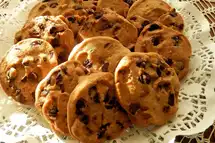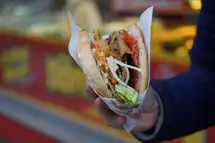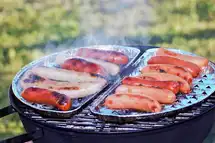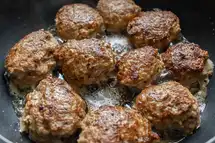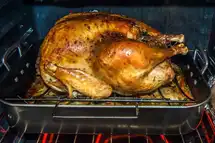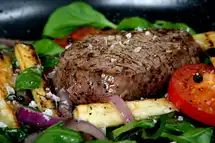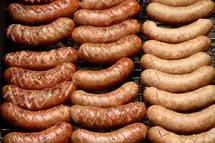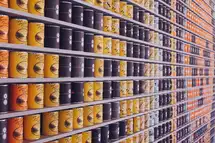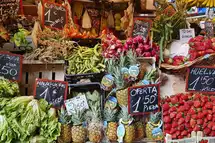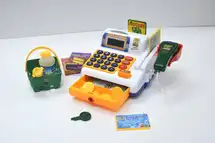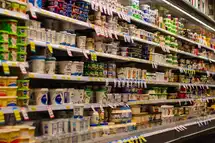What is food storage temperature?
The ideal food storage temperature is between 40F and 140F. This range of temperatures will keep your food safe from bacteria growth and spoilage.
Meat Matters - A Food Storage Temperature Guide For Steakhouses
What is Food Storage Temperature?
It's pointless to produce food of the highest quality if you don't store it safely. Scant attention to storage temperature results in food decay, and decayed food eventually ends up in the bin, adding to the heavy burden of food waste in America. And if spoilt food is accidentally served to customers, it can give a restaurant a bad name, result in costly litigation, impact sales, and even lead to shutdown.
Storing food involves keeping both raw and cooked ingredients in suitable conditions, thereby preventing harmful microorganisms from thriving in the food and compromising it.
Proper storage of food assumes importance in the backdrop of extremely worrying statistics. The Centers for Disease Control and Prevention (CDC) points out that nearly 48 million people in the US are victims of foodborne illness every year. These cases of food poisoning are acquired domestically and result in close to 130,000 hospitalizations, and more than 3,000 fatalities annually.
Generally, the refrigeration temperature for most products is recommended to be 40 F or lower, but refrigerator temperatures need to be maintained between 32 F and 40 F. This takes into account the food temperature danger zone, which according to the United States Department of Agriculture (USDA) falls between 40 F and 140 F.
For frozen foods, the ideal storage temperature is 0 F or lower. However, food items like dried beans, cereals, nuts, flour, and pasta are not temperature-sensitive. Yet, they need to be stored in a dry, cool place away from pests. These items can be maintained at temperatures between 50-70 F.
What's the Danger Zone?
The importance of managing storage, cooking, and reheating temperatures of food items stems from the fact that pathogens reproduce at a slow pace at low temperatures, and can't tolerate high temperatures. However, middle-range temperatures create the greatest problems for food safety, and this is the temperature zone that foods need to avoid.
The temperature range classified by the USDA as the 'danger zone' for food has been mentioned in the preceding section. It is in this danger zone, falling between 40-140 F, that bacteria are believed to double in just 20 minutes.
ServSafe -- the National Restaurant Association's training and certification program on food safety -- takes a smaller temperature range as the danger zone, but its definition is not dissimilar from that of the USDA. According to ServSafe, the food temperature danger zone falls between 41 F and 135 F.
While food items ought to be kept out of these broadly defined danger zones, special care needs to be taken to ensure that they don't stray into the 70-125 F temperature range. Pathogen activity peaks at these temperatures.
Food items may sit in the temperature danger zone and be acted upon by bacteria and other pathogens, but this may not be detected by sight, touch, or smell. It is therefore imperative to use a food thermometer when handling and preparing food.
Most people have no idea how to store food properly.
This can cost them a lot of money in the long run. How can you make sure your food is stored right?
Why Must a Steakhouse Pay Particular Attention to Food Storage?
Storing ingredients at the right temperature allows steakhouses to serve the best quality food to their customers. Steakhouses serve meat. Meat is highly perishable due to its high protein and moisture content. In fact, the surfaces of fresh cuts of meat usually teem with bacteria. If the meat stays in the refrigerator for three days inside a packaging film that is oxygen-permeable, the bacteria on the meat's surface grows, develops slime, and spoils the food.
Spoilage can be prevented by adhering to the critical limits for meat storage described in the succeeding section. A critical limit, in this regard, refers to the extent to which a biological, chemical or physical parameter can be controlled to combat food safety hazards.
A steakhouse that not only conforms to storage temperature requirements, but also follows a recognized food safety program like Hazard Analysis Critical Control Point (HACCP) will be able to minimize the risk of food contamination and foodborne disease. With customers, especially in the post-Covid era, particularly attentive to food safety, steakhouses reputed for their food safety and sanitation measures will have customers coming back time and time again. This will naturally translate to brisk business and hefty profits.
Efficient food storage lowers food waste. This is important considering the massive amounts of food waste generated in the US. Around 30-40% of the food grown in the country goes to waste, according to USDA estimates. American restaurants are believed to produce 30 billion pounds of food waste on a yearly basis. Money spent on food that ultimately goes into the bin is wasted money and a burden on restaurants. Proper food storage can help prevent this.
Unsafe food practices could lead to a heavy cost burden for steakhouses in the form of litigation, lost sales due to customer dissatisfaction and official sanctions, and possible shutdown orders.
However, monetary gains ought not to be the only reason to focus on food safety. The foodservice industry has a responsibility towards preserving Public Health too. Foodborne pathogens are one of the biggest causes of disease in the US, and by storing food safely, steakhouses can help lower the caseload of foodborne illnesses.
Food Storage Temperature Guide for Different Meats
Let's now look at the safe storage temperatures for different kinds of meat. The critical temperature limit for storing carcass meats in a walk-in fridge is 34-37 F. Fresh meat ought not to be stored for long, and boned meat ought to be used within three days.
Individual meat slices are best used on the day they are cut. The maximum time they should be stored is two days. Steaks, chops, ground meat, and stewing meat need to be stored in plastic or stainless steel trays at 36-39 F.
Raw beef needs to be placed in plastic bags so that juices from the beef don't drip onto other foods in the refrigerator. This would prevent cross-contamination in the refrigerator. Fresh whole-muscle beef slices can be stored in the refrigerator for three to five days. Consume refrigerated cooked beef within three to four days. Cooked beef can be stored in the freezer for two-three months. Products with expiry dates need to be consumed or frozen three to five days after being purchased.
The USDA advises against leaving cooked steak at room temperature for more than two hours. If the ambient temperature is over 90 F, cooked steak has to be refrigerated within an hour.
Ground meats are more susceptible to deterioration owing to their larger surface area and the manner in which they are manufactured. Bacteria are distributed evenly in ground meats and multiply quickly under the influence of oxygen. Store ground meats on the bottom shelf of the refrigerator, and try to consume them within a day following purchase.
Freezing slows the growth of bacteria. It is possible to store ground beef for three to four months, and whole cuts of meat for four to twelve months in the freezer. For maximum food storage efficiency and to prevent freezer burn, meats should be wrapped in moisture-proof and gas-impermeable packaging.
Cured meats like bacon, on the other hand, need to be placed in their original containers and then refrigerated. Cured meats turn rancid in the presence of air, and so, they have to be rewrapped once their packages are opened. They have a shelf-life of around a week.
In this regard, vacuum packaging, which involves removing all air, and modified atmospheric packaging, which involves removing air partially, extend the shelf-life of meat and meat products.
Storage Tips to Keep Your Food Safe
Now that we know about meat storage, let's look at the best ways to store other types of food. The aim here, too, is to avoid the Food Temperature danger zone.
Refrigerator temperatures of 32-40 F work for most food items. However, the specific storage temperatures for refrigerator-held food may vary. For example, dairy products and farm produce require temperatures of 36-39 F.
However, if fruits are to be ripened they should be held at 50-59 F, as the pace of ripening significantly decelerates as a result of refrigeration. In fact, bananas can turn black quickly when refrigerated. Soft fruits must not be held for long.
Poultry and seafood must be ice-packed and refrigerated. The appropriate storage temperature for seafood is 30-34 F.
Delicate vegetables such as lettuce must be consumed quickly, while hardy ones like carrots and cabbages can be stored for lengthy periods. Potatoes, however, need higher temperatures and are not exactly suited for refrigerators.
Make sure refrigerators and freezers have adequate slotted and open shelving, allowing air to circulate freely around the walls and shelves. In order to maintain recommended food temperatures and keep the refrigerator running efficiently, ensure that the refrigerator and freezer doors possess a good seal. Remember to keep the doors closed as far as possible.
Appliance thermometers can be used to determine the temperature within the refrigerator or freezer. To do this, place the thermometer in a glass of water and place the glass in the center of the fridge. In the case of the freezer, the thermometer has to be placed between packages of frozen food.
The temperature control would have to be adjusted if the refrigerator temperature falls outside 38-40 F and the freezer temperature doesn't read 0-2 F.
Food needs to be stored in the fridge within two hours of cooking or buying.
Food storage also involves keeping cooked meals warm before they are served. Hot holding needs to be done at temperatures of 140 F and above.
Storing food under cold conditions becomes tricky in case of a power outage. If you diligently keep the refrigerator door closed during the power cut, you will be able to keep the food safe for four hours in the refrigerator, for 48 hours in a freezer that is full, and for 24 hours in a freezer that is half-full.
If the power cut lasts for an extended period, use dry ice to keep the fridge as cold as you possibly can. Use coolers to store your food if power isn't restored within four hours. Also, keep food grouped in the freezer to keep it cold longer.
Food waste is not only a financial and environmental concern, it’s also an ethical one.
A food storage temperature chart is a great way to minimize food wastage and keep your food safe.
How to Make Sure Your Storage Temperature is Accurate
The most accurate way of checking the temperature of storage facilities is to use an appliance thermometer. These are cost-effective and accurate.
Businesses can use smart temperature monitoring software as well. These software solutions are automated and cloud-based, and allow businesses to track the temperature of their storage equipment conveniently. Alerts are sounded when temperatures deviate from normal so that corrective measures can be taken. These software solutions come with mobile apps that allow real-time monitoring of food storage temperature from any location. Real-time reports generated by the software allow restaurants to quickly identify food safety issues and take appropriate action.
Food should be stored at the maximum depth of two inches in stainless steel containers so that the cooling is optimal. Cut large pieces of meat into smaller ones and layer them at a depth of not more than two inches.
If a walk-in cooler is used, the pans should be placed on higher wire shelves to help air flow over the pans containing the food. Keep the pans open until the food reaches a temperature of 41 F to ensure that cooling is quick.
Keep the refrigerator's contents properly covered and arranged well. Keep food in plastic vessels and cover them tightly with lids. This reduces the moisture circulating in the refrigerator. Food needs to be well arranged so that you can store and retrieve items quickly without wasting time searching for them. This ensures that you don't keep opening and closing the refrigerator door again and again. Avoid overcrowding the fridge so that air can freely circulate.
Top 3 Temperature Monitoring Systems for Restaurants
1. Zip Temperature-
Restaurants can monitor the temperature of their storage facilities in real-time with the help of smart software like Zip Temperature. The software sends out notifications when the recommended temperature standards are violated. Real-time reports, which can easily be read, help businesses study patterns of temperature movement and pinpoint reasons for food spoilage. Zip Temperature comes with a feature called 'Chitchat' which lets you communicate with your team on any handheld device, even if you are away from the restaurant site. The Zip Temperature mobile app ensures that you know the status of your storage equipment in real-time. The software solution is available on the Hubworks app store.
2. Monnit-
This temperature monitoring system comes with wireless sensors that help automate temperature checks and create HACCP-compliant data storage and data logging. Monnit sensors send users alerts for any potential threats stemming from rising temperatures, unlocked doors, or unusual motor activity. They allow data on humidity, temperature, and other crucial aspects of storage to be quickly shared in the cloud. This information can then be easily retrieved. By doing away with manual temperature monitoring and data logging, the loss of inventory in storage areas can be minimized.
3. Notion Lite-
This automated temperature monitoring system from Ellab Group works round the clock to provide businesses with real-time data on their refrigerator and freezer temperatures. This information, along with audit-ready reports, are available anywhere, anytime with a few simple clicks. The Notion Lite system can help track the temperature of up to 30 refrigerators or freezers at a time. Other features include instant alerts and notifications through email and SMS, and a record of historical data. Optional door switches used on bigger cold room doors and smaller refrigerators help with HACCP compliance.
People know that food spoils when it isn’t maintained at the right temperature. They just don’t know what those temperatures are.
A food storage temperature chart gives you the different temperatures at which foods ought to be stored to prevent spoilage. This blog breaks it down.



















